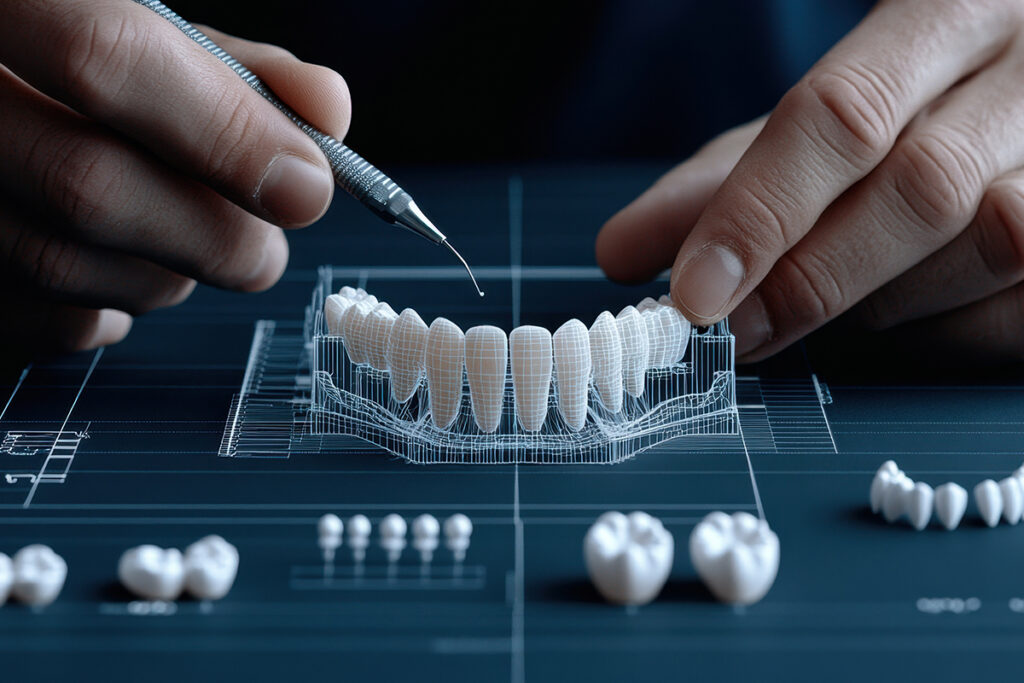
The Craft of Designing Veneers: Merging Aesthetics with Function
A radiant smile is so much more than a set of straight, white teeth. The real perfection of a smile comes down to the way those teeth interact with the rest of the facial features, and how they can enhance someone’s overall appearance.
In the scope of veneers, the design process is a thoughtful balance between artistry and science. Crafting veneers that complement a person’s face requires an in-depth understanding of their own unique structure and aesthetic goals. While veneers have a bad rep of looking unnatural, we’re here to break the notion that all veneers are distasteful. With the right approach and skill, they can look effortlessly beautiful.
Why Personalized Design Matters in Veneer Aesthetics
The idea that one standard veneer design can work for everyone is a misconception. Each face has its own distinct proportions, and so should every smile. When creating veneers, it’s crucial to keep facial features in mind, such as the jawline shape and soft tissue contours. For example, individuals with stronger/angular jawlines may benefit from slightly rounded edges on their veneers to soften and balance out their facial harmony. Likewise, those with softer facial features may need more angular teeth to provide contrast.
Tailoring a veneer design to the specific needs of each patient is truly the key. Factors like symmetry, alignment, and how light interacts with the teeth can all make a significant impact on the final result. The aim should be a smile that not only looks good, but feels natural and seamlessly integrated with the face.
The Role of Lip Movement in Veneer Design
Lips are the framework for a smile, and their shape and movement are essential considerations when designing veneers. A smile is not just a still image—it’s a dynamic expression that changes with speech and emotion. Someone with fuller lips may need veneers that are slightly longer or more pronounced to ensure their teeth stay visible during conversation. A person with thinner lips might require a more subtle approach to avoid overwhelming their smile.
In addition, the mobility of the lips should always be taken into account. A high lip line that exposes the teeth more when smiling will need a different veneer design compared to someone whose lips cover their teeth most of the time.
By factoring in how the lips naturally move, a well-designed veneer ensures that a person’s smile elevates their overall facial expression, without feeling out of place. These meticulous corrections are what allow for a smile that is more attractive and inviting.
The Importance of Customization: Fine-Tuning for Natural Results
Veneer design is an art form, and no two designs are ever truly the same. Subtle variations in details like the buccal corridor (the space between the teeth and cheeks), the opacity of the tooth edges, and even the surface texture of the teeth can all influence how natural the final result looks. Since every individual’s facial structure, smile shape, and lip dynamics are different, each veneer design should be highly customized.
Thanks to digital smile design technology, we now have the ability to analyze each patient’s distinctive features with remarkable precision. However, experience and a deep understanding of aesthetics are still necessary for refining the design.
Creating a Smile that Flows Naturally
Veneer design is ultimately about creating a smile that feels authentic and harmonious with the rest of the face. When crafted properly, veneers complement both a person’s teeth and facial features, bringing out the best in their smile and confidence. By blending technical expertise with an artistic touch, it’s possible to create a smile that feels like a natural part of who they are.
At SDA, we’re passionate about the power of quality veneers. Our highly skilled and attentive dentists are dedicated to honoring all of our patients’ aesthetic dreams. You can learn more about our veneer services here.

